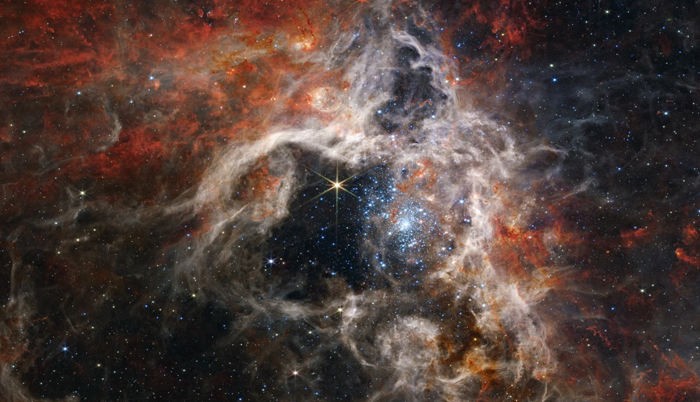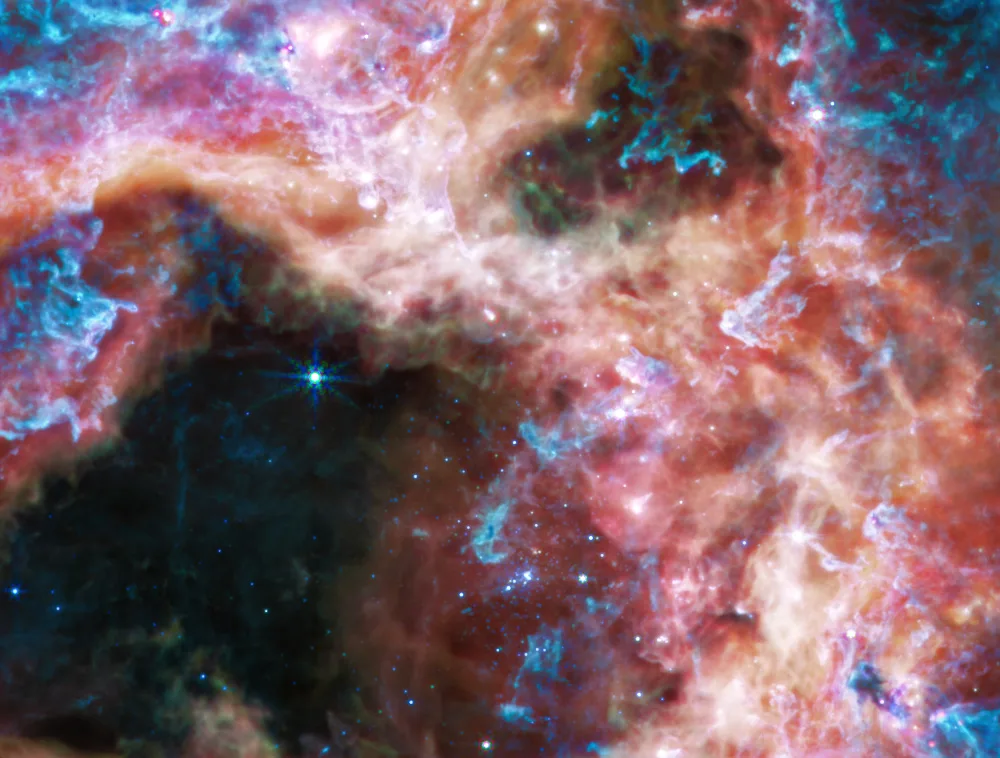![]() Home > Space & Science
Home > Space & Science
The James Webb Telescope Captures The Tarantula Nebula In Stunning Detail

NASA, ESA, CSA, STScI, Webb ERO Production Team
![]() September 8th, 2022 | 14:52 PM |
September 8th, 2022 | 14:52 PM | ![]() 353 views
353 views
ENGADGET
The Tarantula Nebula's bright young stars glow blue in the telescope's images.
The Tarantula Nebula has been photographed by several observatories in the past, but new images captured by the James Webb Telescope give us a clearer, sharper view of the star-forming region. Also known as 30 Doradus, the Tarantula Nebula is the largest and brightest star-forming region among the galaxies near our own, making it a favorite subject for scientists studying star formation.
Astronomers used three of Webb's infrared instruments to image the Tarantula Nebula. When viewed using Webb's Near-Infrared Camera (NIRCam), you'll see the silky filaments that earned the nebula its name surrounding a cluster of massive young stars sparkling blue in the center of the image above. According to NASA, tens of thousands of these young stars have never been seen before as they were concealed by cosmic dust. Stellar winds and radiation from these young stars had hollowed out the center of the nebula, which is bound to keep shifting and changing shape. The filaments that surround them are hiding even more protostars, after all, and they'll emerge to join the other stars at the center as they blow away the gas and dust obscuring them from our view.
In fact, Webb's Near-Infrared Spectrograph has observed one such star that has started emerging from behind its dusty veil. NASA says the star's activity wouldn't have been revealed without Webb's high-resolution spectra at infrared wavelengths. The astronomers also used Webb's Mid-infrared Instrument (MIRI) to view the nebula in longer infrared wavelengths and captured an image quite different from the one captured by NIRCam. This time, the young stars at the center of the nebula fade in the background, while the cooler gas and dust surrounding them glow and take the spotlight, as you can see below.

Tarantula NebulaNASA, ESA, CSA, STScI, Webb ERO Production Team
As NASA explains, the Tarantula Nebula is of special interest to scientists studying star formation, because it has a chemical composition similar to the star forming regions during the universe's "cosmic noon." That's the period in time when the universe was only a couple of billion years old and when star formation was at its peak. In our own galaxy, there are no regions producing new stars at a similarly furious pace. Also, star forming regions in the Milky Way have a different composition. By focusing the Webb Telescope on the Tarantula Nebula, scientists now have images to compare against deep observations of much distant galaxies from the actual cosmic noon, which could help them better understand the early years of the universe.
Source:
courtesy of ENGADGET
by Mariella Moon
If you have any stories or news that you would like to share with the global online community, please feel free to share it with us by contacting us directly at [email protected]